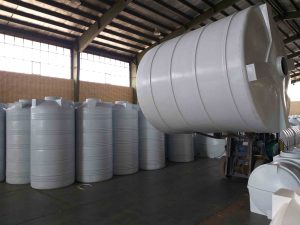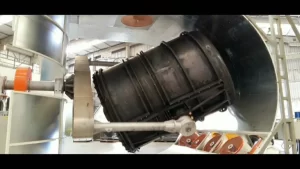
Advantages and disadvantages of rotational molding in Iran
Advantages and Disadvantages of Rotational Molding (Rotomolding)
Rotational molding, also known as rotomolding, is an advanced and efficient method used in the production of plastic parts. This process is especially suitable for producing hollow, one-piece components with uniform wall thickness, and it does not require complex connections or joints. In this article, we will review the advantages and disadvantages of this method and explore its primary applications in producing plastic parts, especially those made from polyethylene. This process is particularly popular in industries where small to medium production volumes are required with high quality.
Advantages and disadvantages of rotational molding in Iran
Applications of Rotational Molding
Rotational molding, or rotomolding, is a thermoplastic manufacturing process that produces hollow plastic components with uniform wall thickness. This method is especially suitable for creating large and hollow parts that require strength and durability. Typical applications include manufacturing tanks, kayaks, coolers, storage containers, and various sporting goods. Polyethylene is one of the most commonly used materials for rotomolding, due to its excellent physical and chemical properties such as high thermal stability, chemical resistance, and long lifespan.
This method is particularly well-suited for production volumes of fewer than 3000 parts per year. In cases where other manufacturing processes like blow molding or thermoforming are not cost-effective, rotomolding provides an excellent alternative. Additionally, this process is ideal for creating double-walled components that require thermal insulation, such as chemical storage tanks and coolers.
Advantages and disadvantages of rotational molding in Iran

How the Rotational Molding Process Works
The rotomolding process generally consists of five main stages:
Filling the Mold:
A hollow mold, typically made from a soft metal like aluminum, is filled with powdered polyethylene. Polyethylene is commonly chosen due to its excellent meltability and suitability for the rotomolding process.
Mold Rotation:
Once the mold is filled, it is rotated along two axes. This rotation ensures the even distribution of the polyethylene powder inside the mold, which then spreads evenly across the mold’s walls.
Heating the Mold:
The mold is then placed in an oven where the heat causes the polyethylene to melt and adhere to the mold’s surface. The temperature must be high enough to melt the polyethylene completely, ensuring a consistent coating on the mold’s walls.
Cooling and Solidification:
Mold Opening and Removal of the Finished Part:
Once the part has cooled and hardened, the mold is opened, and the final plastic part is removed.
This process is particularly effective for producing large components with specific requirements in terms of uniformity and strength.
Advantages and disadvantages of rotational molding in Iran
Advantages of Rotational Molding
Rotational molding offers several advantages over other molding methods like blow molding or thermoforming:
Low Tooling Costs:
One of the major advantages of this process is the low tooling cost. Due to the low pressure involved during the process, molds are often made from less expensive materials like aluminum, which reduces the overall production costs.
Uniform Wall Thickness:
One of the main challenges in other molding processes is achieving uniform wall thickness. In rotomolding, the continuous rotation of the mold ensures that the polyethylene spreads evenly across the mold during both the heating and cooling stages, resulting in consistent wall thickness.
Production of Double-Walled Parts:
Rotomolding can easily produce complex double-walled parts without the need for additional processing steps. This feature is particularly useful in producing components like storage tanks and coolers that require insulation or additional structural integrity.
High Durability and Strength:
Since parts are molded as one solid piece, the likelihood of weak points occurring at welds or joints is eliminated. This results in stronger and more durable parts that can withstand rough conditions.
Stability and Resistance to Harsh Conditions:
Polyethylene and other materials used in rotomolding are resistant to temperature fluctuations and chemicals, making them suitable for harsh environments. This durability is ideal for outdoor or industrial applications.
Aesthetic Surface Finish:
The soft metal molds used in rotomolding allow for intricate surface textures, logos, and symbols to be molded directly onto the part. This capability makes rotomolding ideal for producing parts that require branding or a specific aesthetic appearance.
Advantages and disadvantages of rotational molding in Iran
Disadvantages of Rotational Molding
Despite its numerous advantages, rotomolding does have certain disadvantages:
Long Cycle Time:
One of the major drawbacks of rotomolding is its long cycle time. Each cycle can take anywhere from one to several hours to complete, making it slower than other molding methods.
Limited Material Options:
The materials used in rotational molding must be easily converted from granules to fine powder and must have high thermal stability. This limits the material options, with polyethylene being the most commonly used plastic.
High Material Costs:
Due to the need for high thermal stability and the costs associated with powderizing polyethylene, raw material costs for rotomolding can be higher compared to other molding processes.
Low Repeatability:
The soft metals used in the molds can wear out after about 3000 cycles, leading to a decrease in mold quality. This wear and tear can affect the repeatability of the process, causing potential issues with product quality.
High Labor Costs:
As automation and mechanization have not yet been fully integrated into the rotomolding process, it requires more manual labor compared to other production methods, resulting in higher labor costs.
Conclusion
In conclusion, rotational molding (rotomolding) is an efficient method for producing hollow plastic parts with uniform wall thickness. This process is particularly well-suited for applications requiring high durability, strength, and thermal stability, especially when using polyethylene, a material with excellent resistance to environmental conditions and temperature variations. While there are drawbacks such as long cycle times, limited material choices, and higher raw material costs, the advantages of rotomolding in terms of cost-effective production, uniformity, and durability make it a highly suitable choice for specific manufacturing needs. The process remains a great option for producing small to medium-sized batches of complex plastic parts with high performance.